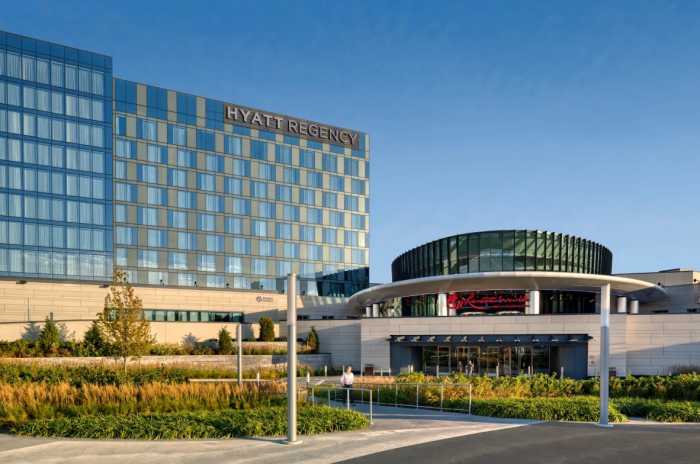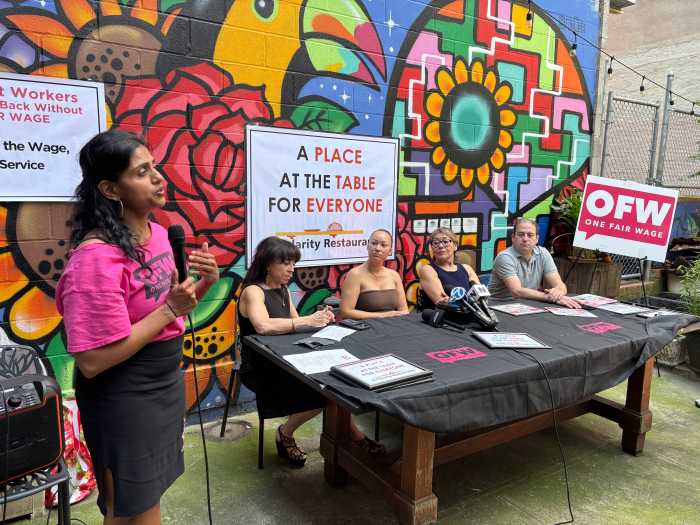
BY ERIC GREENLEAF | This spring brought distressing but not unexpected news — none of Downtown’s elementary schools will have enough room for the coming fall’s kindergarteners. Almost a hundred Downtown families are consigned to wait lists and face an uncertain future, not knowing if their child will be able to attend their local school, or even which school they might attend instead.
The consequences for Downtown Manhattan’s post-9/11 rebirth may be devastating. Unless a sensible overcrowding solution is found soon, many families will move out of Downtown, and not just wait-listed families will leave. Families with pre-schoolers and infants will refuse to subject their children to the risks of wait lists. Many other families, who are thinking of moving to Downtown, will stay away. For the past 10 years Downtown’s families have endured endless construction noise and dust, snarled traffic, the inconveniences of living in a high security zone, and delays in rebuilding. They have stayed, and moved in, through all of this. But if their children’s education and well-being are threatened, they will move out, and stop moving in.
All Downtown residents are grateful for the new schools that have been built, and for the City Department of Education’s decision to increase the size of the Peck Slip School, but they are not grateful for the D.O.E.’s stubborn insistence that Downtown Manhattan doesn’t need any more schools. In 2007, when the kids on today’s kindergarten wait lists were born, there were 824 children born in Downtown’s Community District 1. By 2010, Community District 1 births had increased another 32 percent, to 1086, which is likely to lead to over 650 incoming kindergarteners in 2015, even though there will only be enough school seats in 2015 to take, at most, 450 of them. If there aren’t enough school seats for all of the kids born in 2007, parents will wonder, how can there possibly be room for 32 percent more kids in 2015, or even in any of the intervening years?
This growth in births in Community District 1 is hardly surprising. Between 2000 and 2010, according to the New York City Department of City Planning, the second fastest growing community district in all of New York City was Community District 4 in Chelsea and Clinton, whose population increased 18 percent. During that same time Community District 1’s population grew by over 77 percent, encouraged by the City through billions of dollars of tax incentives to real estate developers. More than 20,000 apartments have been built, and this year, Downtown is likely to welcome its 70,000th resident. A neighborhood that size, which also attracts young families, will, based on simple demographic realities, have more than 1,000 births every year. Downtown is not in the middle of a birth bubble, but rather in a permanently risen tide of population and children, and the City needs to plan accordingly.
The D.O.E. defends its enrollment projections with references to a complicated forecasting methodology. Although the basic methods used by the consulting firms who forecast enrollments for the D.O.E., and by the D.O.E. itself, are sound, and widely used elsewhere, the D.O.E. insists on feeding the forecasts with large scale averages computed across entire boroughs and school districts, and refuses to use the neighborhood-level data that these methods require to produce accurate forecasts. As a result, the D.O.E. forecasts have little relationship to reality in Downtown Manhattan, which is growing four times faster than any other in the City.
What is the solution? Spreading Downtown’s overcrowding to adjacent neighborhoods won’t work, in either the short or the long run. The District 2 Community Education Council was wise last fall to reject the D.O.E.’s proposal to create new zones that would send Downtown kids to schools in the Village and Chinatown that have no room to take extra students. In fact, PS130, where the D.O.E. proposed to send wait-listed kids last year, has its own wait list this year.
The D.O.E. must acknowledge that Downtown urgently needs more elementary school seats – at least 1200, based on the above data, or two good-sized elementary schools. The City needs to fund these schools quickly, and then find sites for them, which is no easy matter, as proven by the time it took to site the Peck Slip School. Since schools take three to four years to build, the City also needs to find and fund interim space to incubate these new schools. As always, they can rely on Downtown’s elected officials, and parents, to help them find these sites.
Since 9/11, over thirty billion dollars have been invested Downtown, including more than 20,000 new and converted apartments, rebuilding the World Trade Center site, and public infrastructure such as transit hubs, the 9/11 memorial, and parks. None of this expenditure will matter, however, if the City insists on shortchanging Downtown the 1200 elementary school seats it needs, which will cost about $100 – $120 million. Throwing away a $30 billion investment for the sake of saving $100 million makes no sense in anyone’s financial textbook. Moving your family to a neighborhood that has no room for its schoolchildren also makes no sense, nor does staying in such a neighborhood. Parents know that the D.O.E. flawed enrollment forecasts can become self-fulfilling prophecies; if the D.O.E. refuses to build more schools, families will move away, and there will be fewer school kids Downtown.
In the recent past, local officials and parents have repeatedly, through hard work and publicizing the basic facts, been able to convince the D.O.E. to build more schools. We hope that there will be more progress this year, and that families will decide to stay Downtown, and to continue moving in. But it takes time to build schools, good school sites are disappearing, and families are worried about whether Downtown schools will have room for their kids. Time is running out.





































